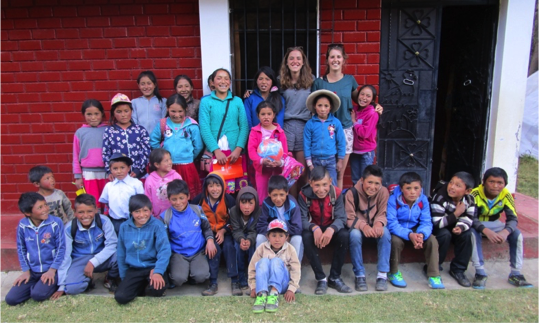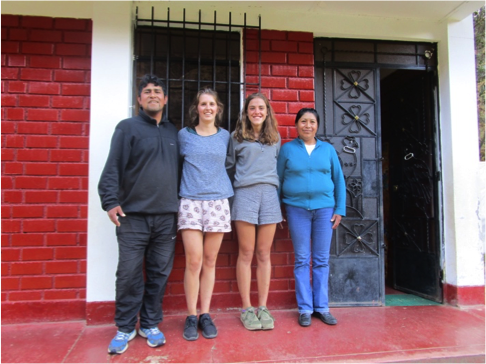Leeds University medical students Ella and Laura spent August at the LED health post in Quisuar, high in the Cordillera Blanca of Peru. Here’s what Laura has to say about the experience….
Quisuar Health Post
Our adventure starting by driving through the Llanganuco pass and trekking for two days to arrive in Quisuar. This was to be our base for the next few weeks. We were centred at the health post which has now been running for twelve years. The aim of the project is to provide healthcare and education to a less privileged and remote village in the Andes. In the mornings we ran the clinic seeing villagers with common problems, for example, worms, gastritis and back pain. In the afternoons we would teach English to the children.

Ella and I, with the children, on their last day of English lessons in Quisuar
Skills and Attributes developed
There is no doubt that my confidence as a clinician has improved throughout this experience. Our previous exposure to patients in England has often been just observing and it is usually hard to get the opportunity to utilize what we have learnt. I was surprised at how much knowledge we had gained throughout medical school and how we were able to adapt these to the environment. One of the biggest daily challenges was communication. I had tried to learn Spanish before and during my trip. The problem however was that many of the villagers could not speak Spanish, but Quechua. As we learnt this is an impossible language to pick up in a few weeks. The consultations where therefore a lot less straight forward than we had witnessed in England. It was an invaluable experience, as we had to think outside the box in terms of communication. For example, many of the villagers could not read, so when testing eyes we had to point at pictures and things in the room instead.
Once the diagnosis had been figured out, then it was on to treatments. In England often patients leave with multiple medications, however, these were not available and this is not sustainable. Therefore, we had to think of ways to help which did not involve medication. For example, physiotherapy movements for pain and massaging using hot water and oils. It was often down to our judgement and an educated guess.
This experience has also broadened my cultural understanding. Peruvians are very superstitious and believe highly in non-medical treatments for diseases. They explained how they had cured asthma by placing the skin of a particular animal on their skin. It often effected compliance with the advice and medication we had provided, which with potentially life-threatening illnesses like asthma, can be very dangerous.
Benefitting the Wider Community
The project impacted the local community by increasing their understanding of certain illnesses and the importance of hygiene. We worked alongside a Peruvian Nurse Tula. We taught her how to conduct a Muscoskeletal examination of different joints and a thorough examination of the heart and lungs. We also taught her about different illness, for example the different types of diabetes and how you diagnose it. These are skills she can continue once we have left.

Ella and I with our guide (Juan) and the nurse (Tula), at the Quisuar Health Post
In conclusion, I loved my time in Quisuar, being fully immersed in Peruvian culture, without Wi-Fi and bucket washing for a few weeks. It was an experience I would love to relieve, I would recommend it to anybody that asks and hopefully one day I will return.
Laura Chapman
Interested in volunteering with us in Peru or Nepal? Use the Contact LED form on www.lighteducationdevelopment.org or message us on facebook.com/LEDCharity to find out about opportunities in 2018.